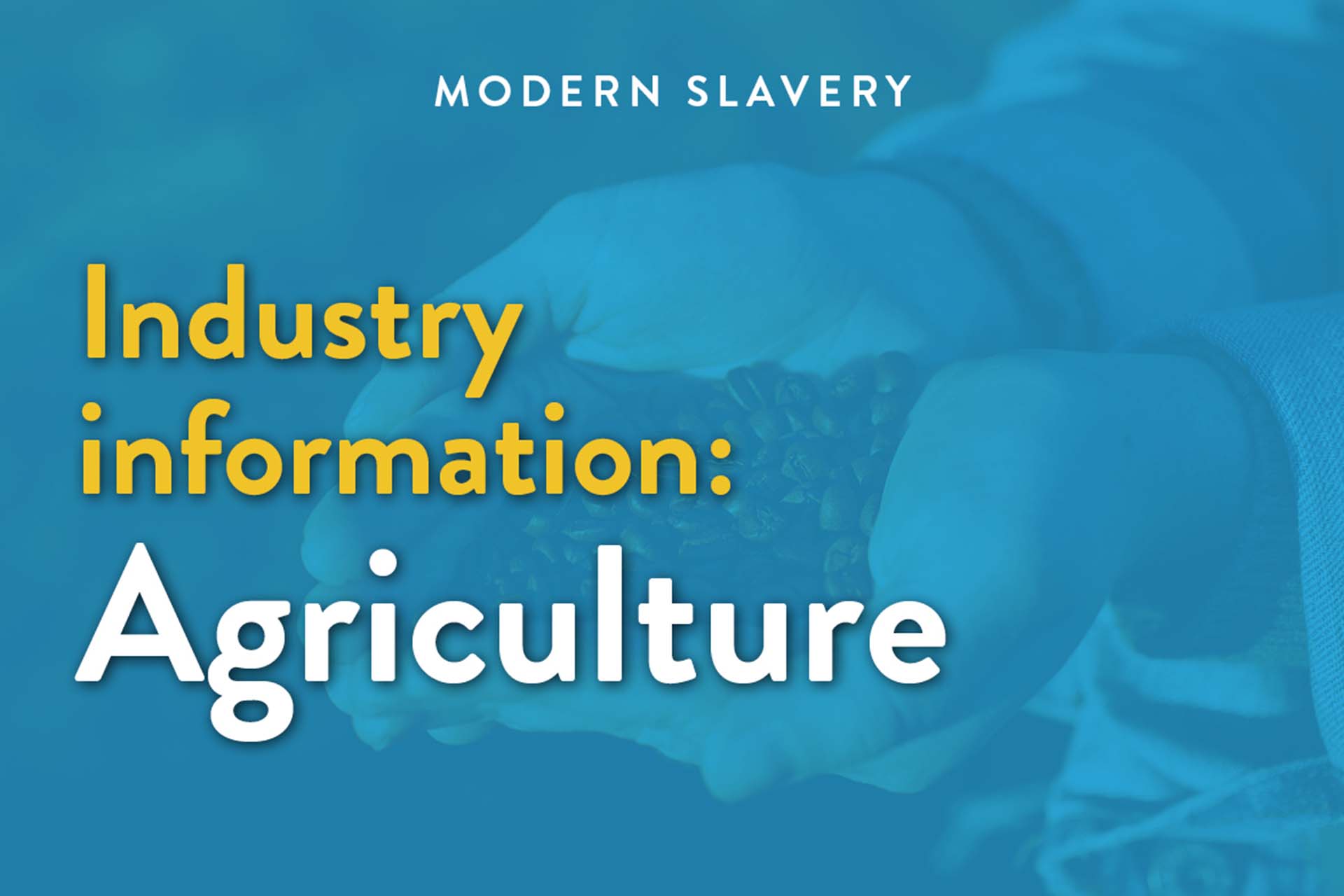
As part of our series to understand more about the situation in Leicester’s garment factories and to educate others, we are sharing some key information and resources about high-risk industries in the UK. Today’s blog looks at the agriculture sector.
While the agriculture sector is somewhat smaller than others in terms of its contribution to the UK economy (less than 1%), it has been identified as one of the highest risk sectors for labour exploitation and modern slavery.
Understanding the risks:
Workforce
There is a very high demand for “low-skilled” workers. Due to a shortage of agricultural workers in the UK, foreign nationals make up a great deal of the workforce. They are often recruited from their home countries and may be charged recruitment fees. People without English language skills have been targeted which makes them vulnerable to exploitation.
Accommodation
It is common for agricultural workers to live in caravans near their work site. They may be charged for this accommodation, which can be overcrowded and unsanitary. Some have described conditions as “horrific”.
Working conditions
There are reports of workers having never received a contract, working 40-60 hours per week, sometimes without days off, and not being paid for holiday or overtime. Zero-hour contracts are common, workers may be paid cash in hand, at irregular intervals, and less than the minimum wage.
Uncertainty of Brexit
Because of the reliance on EU workers, Brexit could be a problem for the sector. There are suggestions of temporary worker visas, however if not carefully considered, the risks for workers using these schemes include debt bondage from visa and recruitment costs, barriers to changing jobs, lack of knowledge about rights and where to seek support and insecure employment contracts.
To learn more about the risks:
- Channel 4 News conducted an investigation into how foreign fruit pickers in the UK are treated and how they arrive in the first place.
- The GLAA, who are responsible for implementing a licensing scheme for labour employers (employment agencies, labour providers or gangmasters) in agriculture, detail the issues they find in this report. They have also done an industry profile here.
- Open Democracy has written about the sector with case studies about exploitation.
What can you do?
If you work for a business that sources produce or somehow work in the agriculture sector, there are questions you can ask:
1. Does the employer have a license?
Operating without a license is criminal. The GLAA will ensure that licensed companies are keeping up employment standards required by UK law in such areas as employment conditions, health and safety, accommodation, pay, transport and trading. Find out more here.
2. Are they aware of the Farm Work Welfare app?
The app, created by various experts, provides farmers and growers with guidance to help them strengthen their recruitment processes and prevent labour abuse and exploitation within their operations. It has practical information and signposts to information on worker rights, licensed providers and document verification.
3. Do they have a modern slavery statement?
A 2018 report by the Independent Anti-Slavery Commissioner and University of Nottingham’s Rights Lab found low rates of reporting by the industry and of those who did report, many were of poor quality.
Our next post will look at the care industry and the risks of exploitation. You can view it here. You can also read our blog about the construction sector here.
*This is part of a blog series examining exploitation in the UK. To read our a summary of our thoughts on what happened in Leicester go here. To learn more about why exploitation happens, go here.


